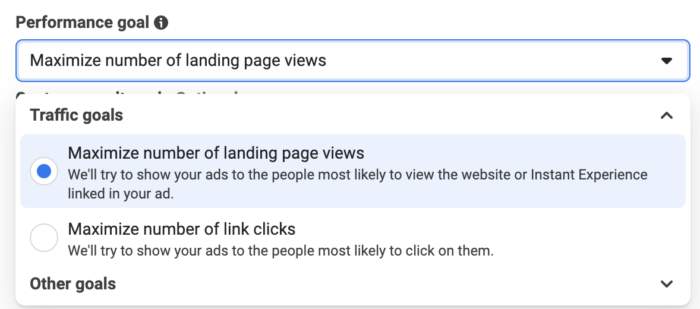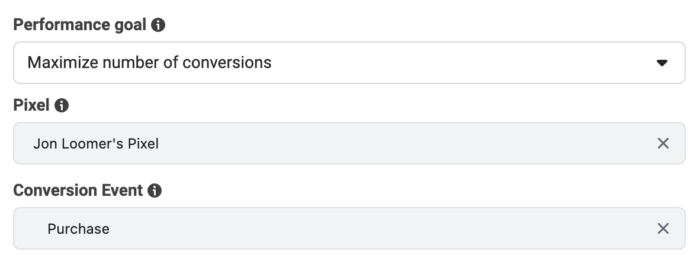There is a common mistake made by Meta advertisers related to conversion rate and an attempt to scale ads. You can be better. Let’s make sure that you don’t make the same mistake.
Maybe this is you. There’s a temptation to try to outsmart the algorithm. But it’s unlikely to work…
Conversion Rate and Opportunity
Like any good marketer, you pay attention to your website metrics with Google Analytics. You are always looking for ways to optimize and improve performance. How can you leverage this information?
You notice that you have a 10-percent conversion rate on a particular product landing page. It’s the perfect combination of a good product, offer, and purchase flow.
You want to improve revenue. One way to do that would be to improve traffic to this high-performing product page.
The Mistake
You come up with an idea. You feel super smart and can’t believe you hadn’t thought of it before.
You know how to drive traffic with Facebook ads. You can do it very cheaply. This is the perfect way to scale.
If you send 100 people, you can expect 10 to convert. If you send 1,000 people, 100 will convert. What about a million?
This can all work because you did such a great job with your product landing page. All you need to do is send the traffic. The landing page will do the rest.
So, you set up a campaignThe campaign is the foundation of your Facebook ad. This is where you'll set an advertising objective, which defines what you want your ad to achieve. More with the primary goal of sending the most traffic possible at the lowest cost. You run a Traffic campaign that is optimized for Link ClicksThe link click metric measures all clicks on links that drive users to properties on and off of Facebook. More or Landing Page ViewsLanding Page View is a Facebook ads metric that represents when people land on your destination URL after clicking a link in your ad. More.

Now, you sit back and wait for the profit to roll in…
The Results
That campaign sends a ton of traffic. And yet, no conversionsA conversion is counted whenever a website visitor performs an action that fires a standard event, custom event, or custom conversion. Examples of conversions include purchases, leads, content views, add to cart, and registrations. More. Nothing.
You wait a while longer. You spend $100. Then $1,000. You’ve sent thousands of people to that amazing product landing page. You might get a sale or two, but that’s it.
Something is wrong. People are clicking on your ad, so they are clearly interested in your product. But virtually no one is buying.
What happened to that amazing conversion rate? What was once 10 percent is now well under 1 percent. You went into this excited about the prospects of big profits and you’ve actually lost money.
You are angry with Meta. There’s no reason that this should happen. It doesn’t make sense.
What Went Wrong?
It’s simple, really: You tried to outsmart the algorithm.
You made assumptions, and that is never a good idea. You assumed that the traffic that appears in Google Analytics is the same as the traffic that you could send with a Facebook ad optimized for clicks.
You assumed that if people clicked your ad, they must be interested in your product. And since the landing page is effective, a predictable percentage of that traffic should result in sales.
But that’s not what happens when you optimize for Link Clicks or Landing Page Views. You’ve learned an important lesson: Not all clicks are created equal.
It’s quite possible that the 10 percent conversion rate reflects organic traffic. The people who made their way to this landing page did so on their own. Your links, emails, and marketing messages helped. But it wasn’t algorithmic.
Meta’s ad algorithm had only one concern when you created your ad setAn ad set is a Facebook ads grouping where settings like targeting, scheduling, optimization, and placement are determined. More optimized for Link Clicks or Landing Page Views: Get Link Clicks or Landing Page Views at the lowest cost.
Nothing else. No concern about what those people do after landing on your website. It doesn’t matter.
So, the algorithm will find advantages — even weaknesses — in the system to find you cheap clicks. It could be people who just click everything. It could be accidental clicks due to the placementA placement is a location where your ad is shown. Examples include Facebook's mobile Feed, Messenger, Instagram feed, Audience Network, right-hand column, and more. More. It might even be click fraud that hasn’t yet been flagged by the system.
But that traffic will not be nearly as good as what you normally get.
What You Should Do
Don’t overcomplicate this. If you want to increase purchases with your ads, run a Sales campaign that is optimized for purchases.

The reason is simple: The algorithm will distribute your ads and make adjustments to delivery based on how well you achieve that goal.
If you optimize for Link Clicks or Landing Page Views, the algorithm will focus on that. If you optimize for Purchases, the algorithm won’t be happy unless you’re getting sales.
Of course, you’re going to see that surface-level metrics may look nicer when optimizing for the click. You’ll get sky-high Click-Through Rates and lowest-of-the-low Cost Per Clicks. You will need to spend more to get clicks when optimizing for conversions, and that can be misleading.
You need to remember that the 10 percent Conversion Rate (or whatever that rate may be) is not in a vacuum. That rate will not hold, regardless of the traffic that you send. It would be nice, of course, but that’s not reality.
If you are unable to optimize for a Purchase, work your way back through the funnel from there. Try Initiate Checkout, Add to Cart, or even a custom event for a Quality Visitor. But the last resort should be be Link Clicks or Landing Page Views.
Even then, you’re likely burning money.
Watch Video
I recorded a video about this, too. Watch it below…
Your Turn
What have been your experiences with the expected Conversion Rates with Meta advertising?
Let me know in the comments below!







